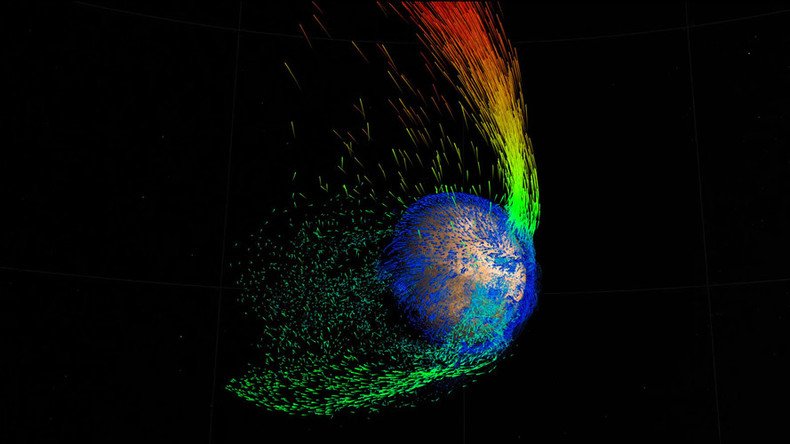NASA: Martian atmosphere stripped by extreme solar wind erosion (VIDEO)

NASA space probe, Maven, has returned the first ever measurements of solar wind erosion to explain what’s drying up Mars.
Maven's data found that a stream of electrically charged particles blowing from the sun strips gas from the Martian atmosphere at a rate of 100 grams (a quarter of a pound) per second.
When solar wind reaches Mars, it impacts the upper atmosphere and piles up to create a bowl shock.
#MAVEN Reveals Speed of Solar Wind Stripping Mars' Atmosphere https://t.co/ikxwCaxz2g VIDEO: https://t.co/fl4OrJT5mbpic.twitter.com/hFLUihGyeB
— NASA's MAVEN Mission (@MAVEN2Mars) November 5, 2015
The charged particles from the upper atmosphere eventually pick up enough energy to fill the electric field and escape into space, a process which may explain the red planet’s climate transition from a warm and wet environment to the dry and cold wasteland it is now.
What’s stripping the Martian atmosphere? @MAVEN2Mars spacecraft returns 1st ever measurements of solar wind erosion.https://t.co/yviV80LZFE
— NASA (@NASA) April 13, 2016
Maven has been observing Mars’ upper atmosphere and sending back crucial data since its arrival in 2014, the mission continues to assist scientists with understanding the climate’s ongoing evolution.
READ MORE: Eerie image of Martian ‘dust devil’ captured by NASA’s Opportunity rover (PHOTO)












